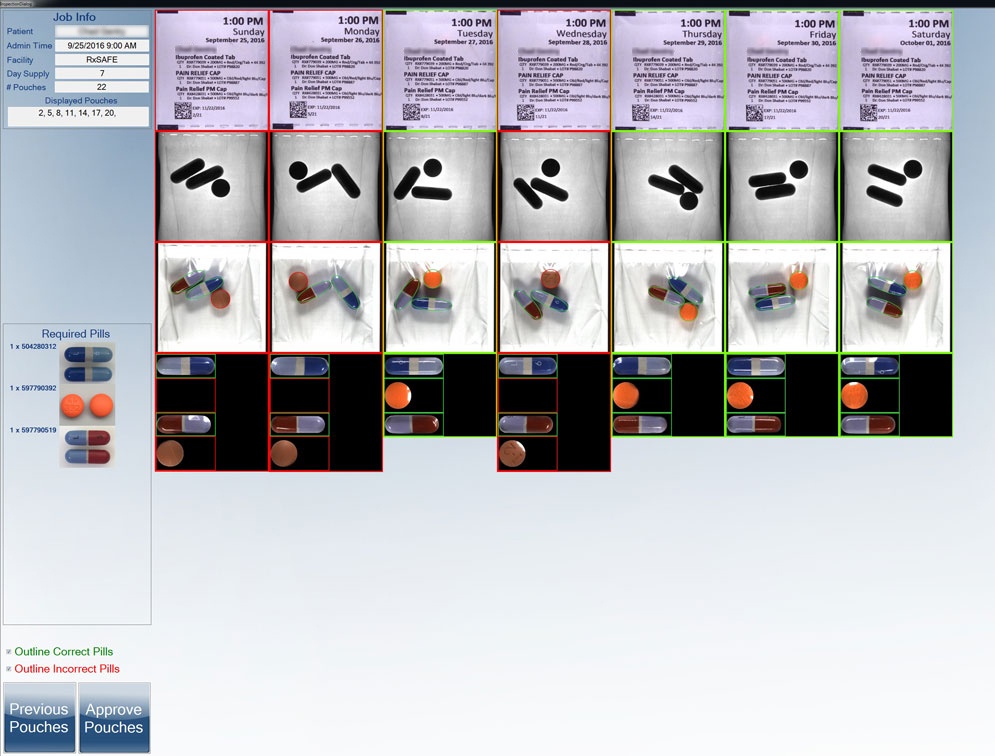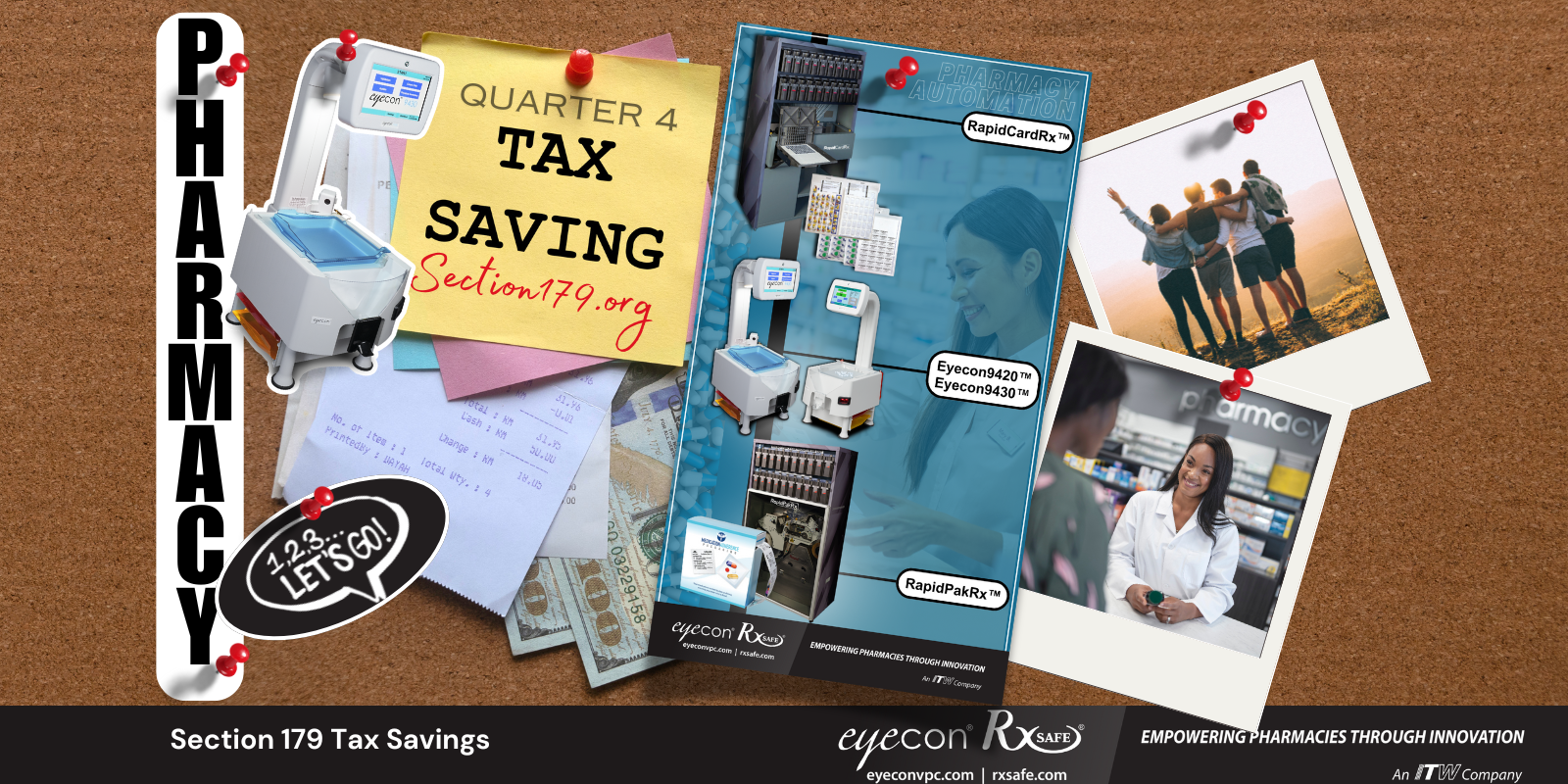If you Google the phrase “pharmacy rework,” it’s interesting what you don’t find.
- You won’t find scholarly journal articles about the staggering cost of rework to the healthcare delivery system.
- You won’t find trade publication articles discussing how pharmacists are using the latest strategies and tactics to reduce rework in their stores.
- You won’t even find a good definition of the term ‘rework’ in a pharmacy setting.
Let’s start there. What is rework?
Rework defined
In the medication adherence realm, we’re not talking about re-filling a prescription because the patient failed to pick it up, and the medication was eventually put back into stock (meaning you had to fill the script twice.)
The kind of rework we’re discussing is what goes on in every pharmacy doing adherence packaging, every day: fixing blister cards and pill pouches after the pharmacist finds an error during verification.
Rework is painful, and costly.
In strip packaging, rework means having to cut open defective pouches, correct them by hand and then tape the pouches back together. In a 90-pouch strip (about a month’s supply of adherence packaged meds), a problem detected in just one daily med pass means you might have to fix 30 of those pouches.
Maybe Google can’t find a lot of information on pharmacy rework because it’s not something we like to talk about.
Or, maybe it’s because 25 years of flawed adherence automation has trained us that rework is just a necessary evil. A cost of doing business.
And so, rework has become an overlooked drag on profits and productivity.
The cost of pharmacy rework
If the typical pharmacist makes $120,000 a year, that equates to about $60 per hour. So five minutes of rework would cost the pharmacy $5, half an hour would cost $30, and so on. Over a year’s time, rework could cost your pharmacy operation tens of thousands of dollars.
Why is this happening?
The reason is that most adherence strip packaging solutions were designed decades ago, before the advent of high resolution digital cameras, and before monitors with 4K resolution were commonplace.
Today, you can buy inspection camera systems, manufactured overseas, typically for $80,000 or more, but they are not built into the strip packaging machine. As a separate unit, these systems inspect the pouches after they have already been filled by the packager. So, if there’s a mistake, that means rework. Cutting open defective pouches. Fixing the meds. Taping the pouches back together. All by hand. In fact, rework can defeat the purpose and the promise of automation.
Introducing built-in vision inspection
As RxSafe CEO William Holmes says, “Pharmacists should be in the fill-it business, not the fix-it business.”
Enter the RapidPakRx™. RxSafe’s new strip packaging solution offers a unique, 3-step integrated machine vision verification system that can save pharmacists hours and hours of inspection time, while dramatically reducing rework.
The first step of vision inspection is at the pre-fill station, when pills are counted and verified by size, color, shape and inscription. Those pills are then loaded into our patented universal cartridges. These are NOT in any way similar to the calibrated cassettes used by other strip packaging systems. Those cassettes can only handle one, specific NDC.
The RapidPakRx cartridges are truly universal and can hold any size pill, tablet, gelcap or split-tab -- even vitamins or supplements -- without calibration.
But what’s most impressive from a rework standpoint, is that with vision inspection systems built into the packager, mistakes are prevented before the pills ever drop into the pouch. That means a dramatically reduced number of pouches need to be reworked. The best time to catch a mistake is before one is made. Our integrated vision inspection systems capture an image of each pill to verify it’s correct BEFORE it drops into the pouch.
With the vision inspection system built right into the packager, if a mistake is detected, production of the strip is halted immediately. (The system doesn’t continue to fill pouches incorrectly.) Without a built-in inspection system, other strip packagers must produce an entire strip (again, typically 90 or more pouches) before it is inspected. That means if an error is found in a med pass, the rework needed is multiplied.

When it comes to adherence strip packaging, integrated vision inspection is a game-changer. But don’t take our word for it. Here’s what one RxSafe customer has to say.
“The RxSafe strip packager with built-in vision inspection is a great system because it packages the medication and inspects it simultaneously,” says Jordan Gosney, Owner, Gosney Long Term Care Pharmacy. “So as fast as you can pack the medication, it can inspect the medication, and that cuts out a lot of time in my workflow.”
The RapidPakRx’s vision verification system, which includes 23 separate camera systems from start to finish, delivers unparalleled accuracy and speed, while ensuring the right pills are in the right pouch.

Click to watch the video above.
Don’t ignore rework. Contact us today to schedule a demo, or call 877-383-1017 for immediate assistance.


.png)






